Since pretty much the beginning of the Pinball project it was clear there is gonna be a Death Star featuring a critical weakness in the thermal exhaust as easy to hit as a womp rat. The overall idea would be that there is some kind of ramp and if you manage to shoot the ball up in the right state of the game (eg. when actually attacking the Death Star), this would give a huge number of points or something.
There should also be a hole where the ball can come out (obviously necessary), and another hole at the top (pretty much invisible to the player) where the ball can come in without destroying it (think: “thats no moon, thats a space station!”).
This is the story (with lots of pictures) of the Pinball Death Star model we built (so far).
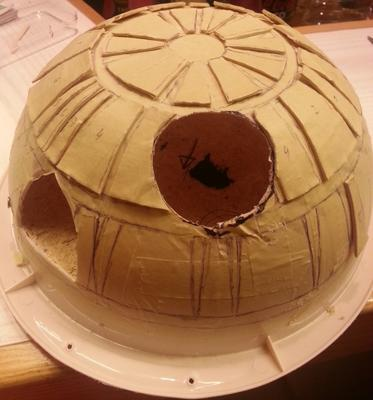
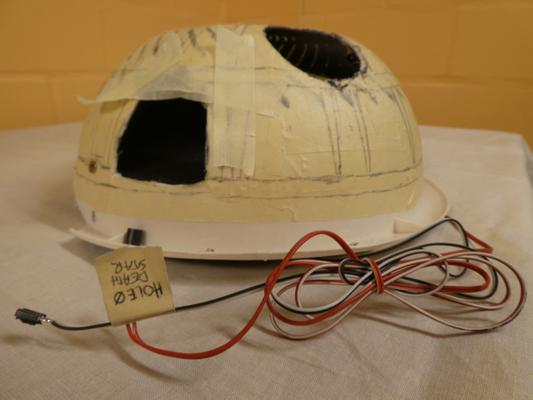
Original Death Star prototype built out of a plastic salad strainer and tape, featuring one light barrier. Originally had a diligently crafted paper-tape ridge structure on top, alas that turned out to be too fragile and the tape “blocks” would fall of despite strong glue and several other approaches.
By April 2018, we have put a lot of effort into this prototype, but still it turns out it will not work out. Apart from the decorative aspect, installation into the playing field is a nightmare and needs to be followed by long periods of calibrating the installation angle such that the interior floor surface is correctly in line with the playing field. This in the end was one of the major time-wasters that led to endlessly trying to recover status quo from several weeks ago.

Needless to say the emperor was most displeased with this apparent lack of progress.
Then miraculously, my father finds a Death Star lamp on Amazon (non-affiliated Amazon link, check out if you want to see the original lamp). Turns out this was exactly what we need to finally complete the mission! After some aligning of the plastic pieces, carefully cutting of holes and construction of the little “rain roofs” for them, I’m working on the light barriers:
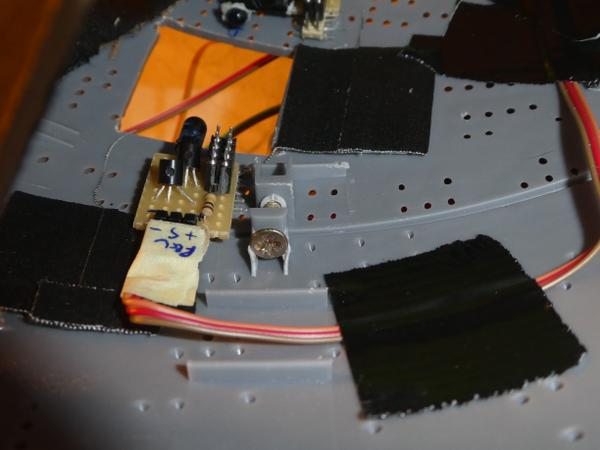
Light barrier in new Death Star. Both sender and receiver built using (identical) IR LEDs I happen to have available. Turns out you can use pretty much any LED as a (low sensitivity) receiver for that exact wavelength (plenty of info about this on the net). Two transistors (“Darlington pair”) provide enough amplification to make this hack work (at least under lab conditions, yet to be tested in the wild).
You can also see one of the screws holding the two halves together (we ended up joining them the other way around than intended for the original lamp for a couple of reasons).
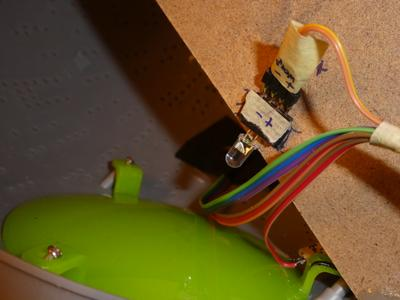
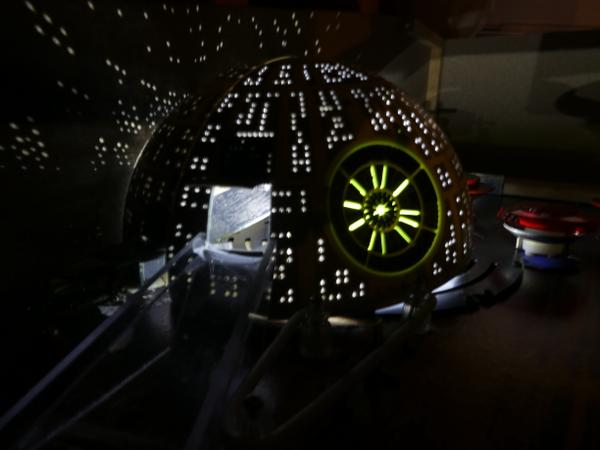
Six LEDs provide controllable illumination, letting the Death Star glow from inside in the dark. The green plastic piece in the background is backing of the main weapon to make it look laser-like. A single, well-angled LED illuminates that piece on demand so we can activate the weapon for dramatic effect.
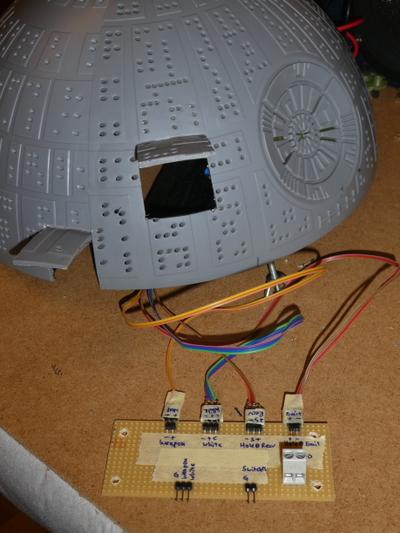
Death Star with the two bottom holes (one for ramp-entry, the other for ground level exit) and (electronically trivial) switch board for connecting the death star to lamps module, switches module and power supply in a sane way. Also visible: One of the screws for mounting. In contrast to the early prototype we are not inserting it through the playing field from below anymore but actually mounting it on top so all levels/angles are fixed relative to the playing field.
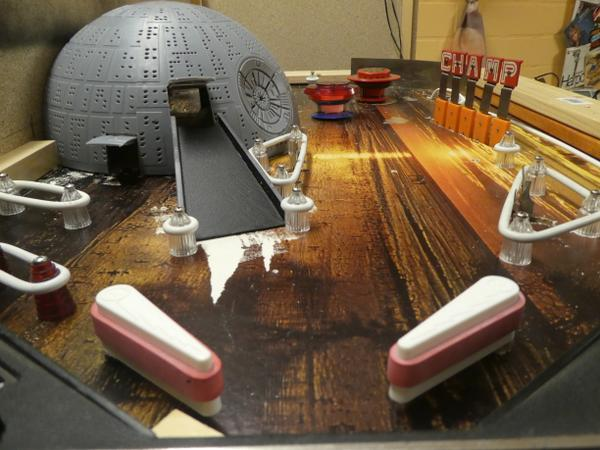
New Death Star attached to the prototype playing field together with ramp. On the left side you see a bit of the side wall, Death Star was cut so we could neatly attach it.
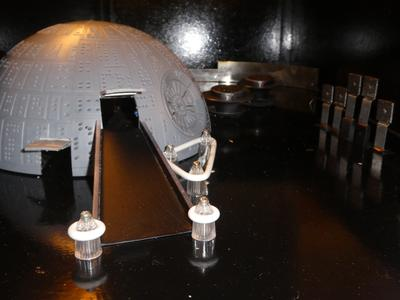

Some work has gone into reproducing all the holes and cuts on the prototype playing field on a wood plate that we want to use as the final one. After painting everything black and letting it dry for a whole day and night, surface is still somewhat sticky, but time is almost up so we attach everything together for some final pictures. Turns out, the varnish was a bad choice (despite long discussions in the store), we’ll substitute this just-produced playing field with another wooden plate that comes with a robust black finish in our next session. Needless to say it was not the original plan to have three iterations of playing fields (not including the very early prototypes).
A lot of work here that is not visible was put into figuring out a broken coil and all kinds of software work, but thats another story and shall be told another time 😉